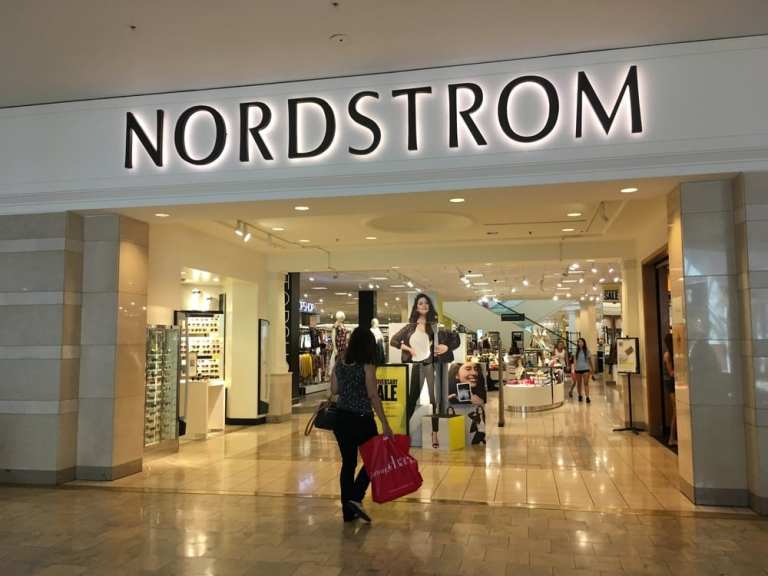
Nordstrom did not exactly have the brightest or merriest holiday season in 2018. The retailer was showing many of the same symptoms of Q4 malaise as Macy’s, JCPenney and Neiman Marcus: lower-than-expected revenue, weak same-store sales performance and falling foot traffic.
It all added up to a season that came in much weaker than the market expected.
Which isn’t to say that all the news at Nordstrom is bad news, or that all the results were negative. The retailer continued to shine in two areas: off-price sales and eCommerce sales.
Nordstrom Rack, the brand’s line of stores specializing in discount and lower-priced goods, had a strong season. Comparable sales were up 4 percent, and have been for the last three consecutive quarters, consistently notching faster growth than Nordstrom’s full-line business for the past year and a half. Off-price accounted for just over a third of the company’s revenue in fiscal 2018, up from less than a quarter of its business five years earlier. Analysts expect the off-price business will continue to outgrow the full-price business in both the near and long term. Nordstrom’s sales mix will likely follow to the higher-growth channel.
The good news, according to the experts, is that Nordstrom’s total growth is likely to accelerate –which means the worst of the results are likely behind the retailer for the time being.
Another bright spot was eCommerce, particularly in generating full-price sales. These days, about a third of full-line sales come care of Nordstrom’s digital channels. Buy online, pick-up in store (BOPIS), according to the brand, has been critical in pushing that boost
But while digital and off-price are leveling out the sales picture for Nordstrom – and helping to distinguish the retailer from some of the other, more troubled department store players – generating full-line, in-store sales and raising foot traffic remains a priority, albeit one Nordstrom is approaching differently. BOPIS brings customers in (and lessens the margin pressure associated with eCommerce), but the brand’s goal goes somewhat deeper than just bringing bodies through the doors.
The primary goal is engage consumers and draw them in deeper, a job that often falls to Nordstrom VP of Creative Projects Olivia Kim. Since she joined Nordstrom is 2013, Kim’s main role has been recruiting new customers by making Nordstrom a destination for fashion inspiration and brands that can’t be easily found elsewhere.
In the last several years, that has resulted in several in-store pop-up shops, organized loosely around a theme and featuring digitally native, niche and boutique brands to offer an unusual (and exclusive-feeling) full-line shopping experience.
Partnerships are not a new idea, as Kim told Glossy in an interview, but the process of leveraging them to drive consumer interest has been largely revamped in the digital era.
“We’re talking about a retail concept that really started in the early 2000s, and it is easy to overdo collaborations so that your own brand voice gets lost,” said Kim. “Brand 1 + brand 2 is no longer innovative; what is innovative is finding something that resonates with the customer – [and makes them] interested and excited. They need to look at you as a point of inspiration for when they go to make their next purchase. Earning trust is how you gain wallet share.”
This spring, she noted, the retailer is dedicated to all things “inclusive beauty.” In this context, “inclusive” means natural beauty brands, gender-neutral offerings (men need moisturizer, too) and makeup in a wide variety of shades and colorations for a wider array of ethnic backgrounds.
“Diversity and inclusivity are important pillars in everything we do, and we want this shop to be a destination featuring the best natural beauty products for everyone, regardless of skin tone or gender,” Kim noted.
The retailer’s bigger vision, however, is about redefining the consumer convenience. Going to a store, Kim said, will never be more convenient than getting products shipped to a shopper’s home. Although she said she doesn’t “think about Amazon,” she admitted the eCommerce giant does keep her on her toes, along with everyone else in retail. But she said they aren’t the competition – because, as Nordstrom works to re-invent itself in the era of digital retail, they are thinking about wholly new ways to build customer relations.
“Convenience means more than speed; it [also] means preference,” said Kim. “We’re bringing experience, products and cool ideas, and matching our customers to new brands, and that’s very different than Amazon.”